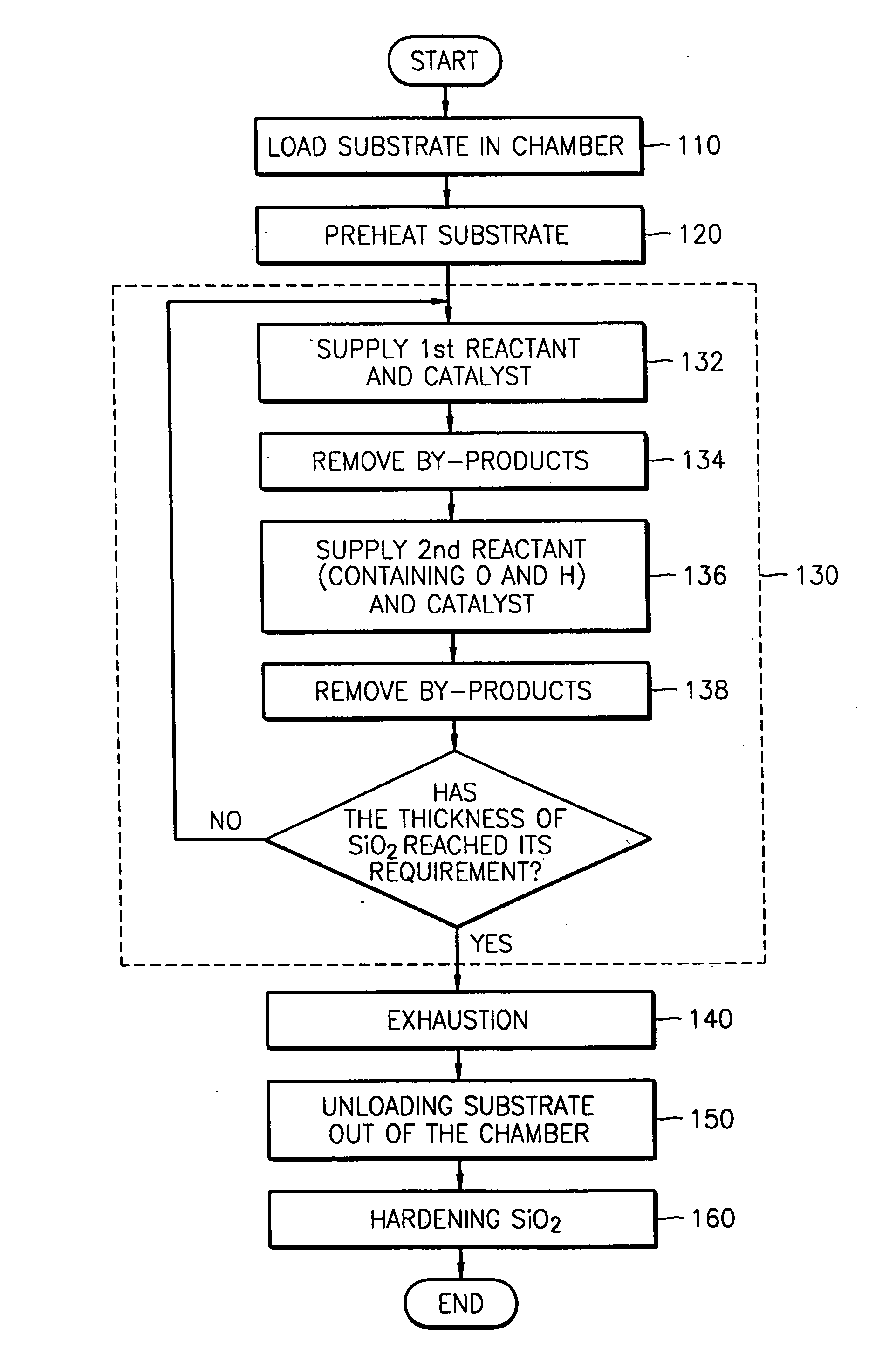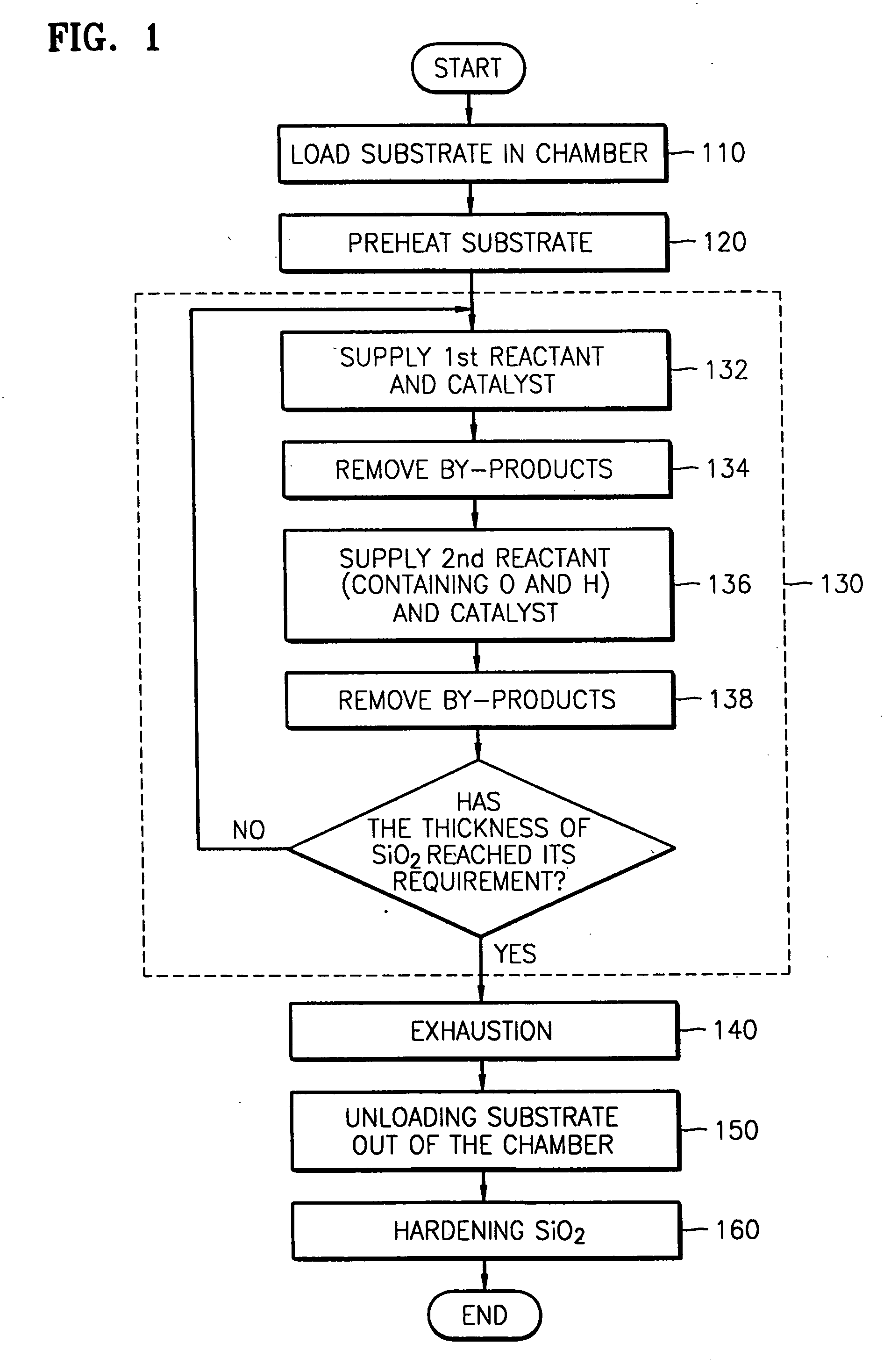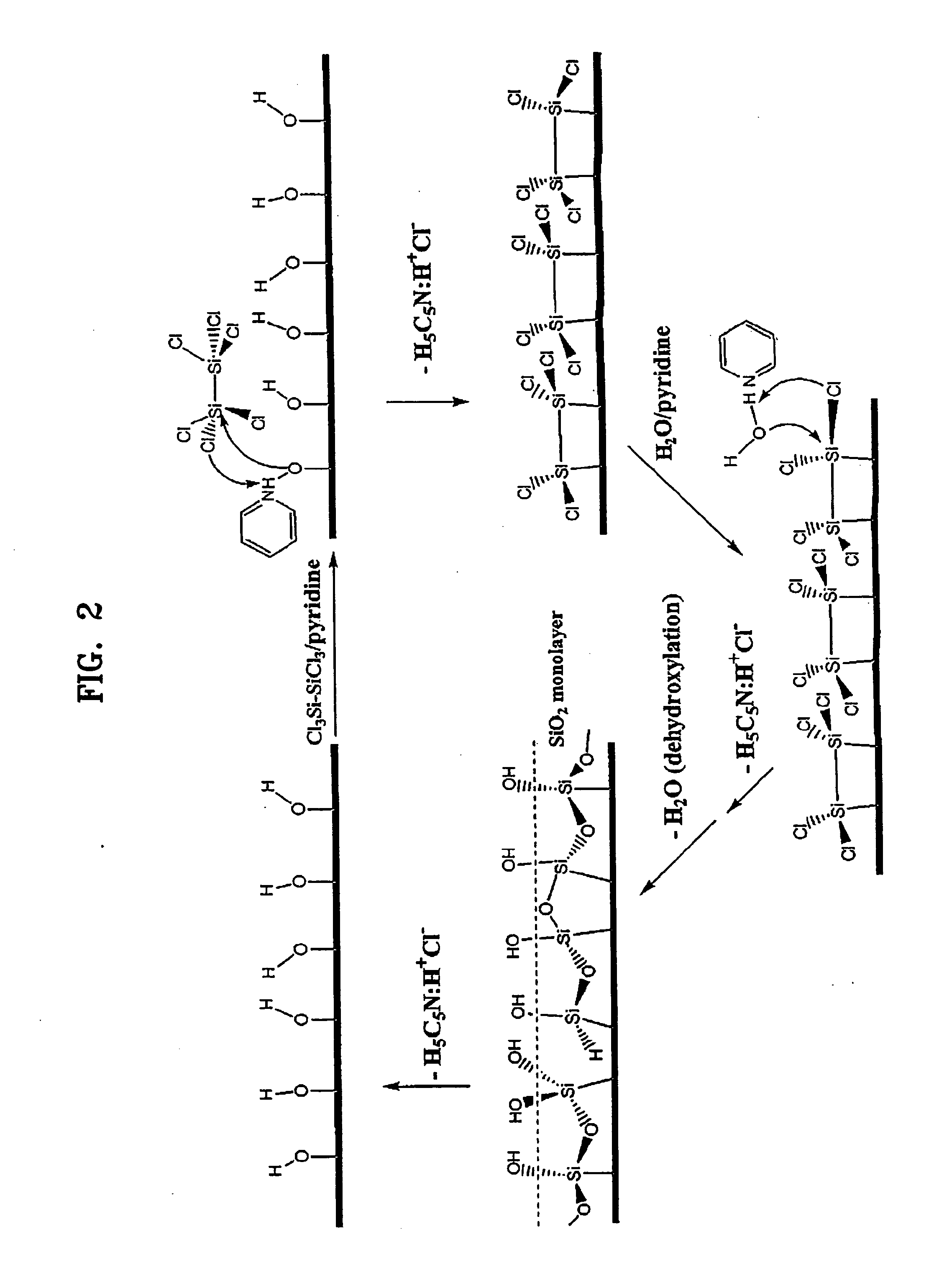Semiconductor device with silicon dioxide layers formed using atomic layer deposition
a technology of atomic layer deposition and silicon dioxide, which is applied in the direction of chemical vapor deposition coating, coating, metallic material coating process, etc., can solve the problems of reducing uniformity, requiring temperatures greater than 600° k, and exposures greater than 10 times, and achieves high purity, superior surface density, and high surface properties. high degree of precision
- Summary
- Abstract
- Description
- Claims
- Application Information
AI Technical Summary
Benefits of technology
Problems solved by technology
Method used
Image
Examples
first exemplary embodiment
[0057] According to a first exemplary embodiment of the present invention, silicon dioxide thin films are grown on the functionalized surface of a substrate having hydroxyl groups using Si2Cl6 or a comparable compound, e.g., a silicon halide having two or more silicon atoms, as the first reactant; a compound containing 0 and H elements, e.g., H2O and / or H2O2, as the second reactant; and a base compound, e.g., ammonia or an amine, as the catalyst. For this embodiment of the invention, the first reactant is a silicon compound having at least two silicon atoms, for example a silicon-halide compound selected from the group consisting of: Si2X6, Si3X8, Si4X10, and Si3X6 (Triangle), which has the following chemical structure:
wherein X is a halogen such as F, Cl, Br, I. In a preferred embodiment, the first reactant is selected from the group consisting of Si2Cl6, Si3Cl8, Si4Cl10 and Si3Cl6(Triangle). For this embodiment of the invention, the second reactant is a compound containing oxyg...
second exemplary embodiment
[0065] According to a second exemplary embodiment of this present invention, silicon dioxide thin films are grown on a functionalized surface of a substrate using a silicon halide as the first reactant; a second reactant containing O and H atoms, e.g., H2O and / or H2O2; and a tertiary aliphatic amine catalyst. In this embodiment of the invention, by exposing the functionalized surface of the substrate to a mixture of the first reactant and the catalyst in a first process step, a chemisorbed layer of the first reactant is formed along the substrate surface. Unreacted first reactant and byproducts are then removed from the region of the substrate. In the next process step, the chemisorbed layer of the first reactant is reacted with the second reactant in the presence of the tertiary aliphatic amine catalyst. Byproducts of this second reaction step are removed from the substrate region.
[0066] In accordance with this invention embodiment, it has been found that the use of a tertiary ali...
third exemplary embodiment
[0074] According to a third particularly preferred embodiment of the present invention, many if not all of the advantages and benefits of both of the earlier-described embodiments of this invention can be realized. In this embodiment, silicon dioxide thin films are grown on a functionalized surface of a substrate using a silicon compound having at least two or more silicon atoms, e.g., a silicon halide such as Si2Cl6, as the first reactant; a compound containing O and H atoms, e.g., H2O and / or H2O2, as the second reactant; and, a tertiary aliphatic amine catalyst.
[0075] Thus, in accordance with this invention embodiment, the functionalized surface of the substrate is exposed to a mixture of the first reactant and the tertiary aliphatic amine catalyst in a first process step to form a chemisorbed layer of the first reactant along the substrate surface. Unreacted first reactant and any byproducts are then removed from the region of the substrate. In the next process step, the chemiso...
PUM
| Property | Measurement | Unit |
|---|---|---|
| temperature | aaaaa | aaaaa |
| temperature | aaaaa | aaaaa |
| time | aaaaa | aaaaa |
Abstract
Description
Claims
Application Information
 Login to View More
Login to View More - R&D
- Intellectual Property
- Life Sciences
- Materials
- Tech Scout
- Unparalleled Data Quality
- Higher Quality Content
- 60% Fewer Hallucinations
Browse by: Latest US Patents, China's latest patents, Technical Efficacy Thesaurus, Application Domain, Technology Topic, Popular Technical Reports.
© 2025 PatSnap. All rights reserved.Legal|Privacy policy|Modern Slavery Act Transparency Statement|Sitemap|About US| Contact US: help@patsnap.com



